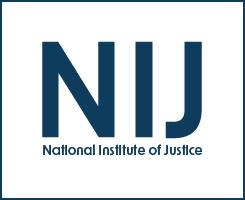Prison population counts
New Orleans Inmate Survey: A Test of Greenwood's Predictive Scale
Maine Rejects Indeterminacy - A Case Study of Flat Sentencing and Parole Abolition
FY23 OJP Correctional Education Evaluation Package
Prison Work-Release Programs and Incarcerated Women's Labor Market Outcomes
Incarceration and Desistance: Evidence from a Natural Policy Experiment
Justice Atlas of Sentencing and Corrections
Desistance From Crime: Implications for Research, Policy, and Practice
Most scholars would agree that desistance from crime – the process of ceasing engagement in criminal activities – is normative. However, there is variability in the literature regarding the definition and measurement of desistance, the signals of desistance, the age at which desistance begins, and the underlying mechanisms that lead to desistance. Even with considerable advances in the theoretical understanding of desistance from crime, there remain critical gaps between research and the application of that research to practice.
See the YouTube Terms of Service and Google Privacy Policy
Prisons as Schools for Change: Evidence from Illinois
CSSI Comprehensive School Safety Projects - Breakout Session, NIJ Virtual Conference on School Safety
On February 16-18, 2021, the National Institute of Justice hosted the Virtual Conference on School Safety: Bridging Research to Practice to Safeguard Our Schools. This video includes the following presentations:
See the YouTube Terms of Service and Google Privacy Policy
Effects of Contradictory Signals on Post-Prison Labor Market Outcomes
Crime and Incarceration: Some Comparative Findings From the 1980s
Decision To Incarcerate in Juvenile and Criminal Courts
Incarceration and the Community: The Problem of Removing and Returning Offenders
Unintended Effects of Penal Reform: African American Presence, Incarceration, and the Abolition of Discretionary Parole in the United States
Policing Career Criminals - An Examination of an Innovative Crime Control Program
Why the Drop in Crime?
Impact of Racially Inclusive Schooling on Adult Incarceration Rates Among U.S. Cohorts of African-Americans and Whites Since 1930
Bridging the Gap between Research and Practice: The Role of Science in Addressing the Effects of Incarceration on Family Life
Toward a Demographic Understanding of Incarceration Disparities: Race, Ethnicity, and Age Structure
Case of Unrealistic Expectations: The Impact of Rape Reform Legislation in Illinois
When Neighbors Go to Jail: Impact on Attitudes About Formal and Informal Social Control
Relationship Between Re-Incarceration and Their Own Childhood Foster Care Experience of Women
State Responses to Mass Incarceration
Researchers have devoted considerable attention to mass incarceration, specifically its magnitude, costs, and collateral consequences. In the face of economic constraints, strategies to reduce correctional populations while maintaining public safety are becoming a fiscal necessity. This panel will present strategies that states have undertaken to reduce incarceration rates while balancing taxpayer costs with ensuring public safety.
See the YouTube Terms of Service and Google Privacy Policy
Why Is the United States the Most Homicidal Nation in the Affluent World?
Ohio State University Since World War II, the homicide rate in the U.S. has been three to ten times higher than in Canada, Western Europe, and Japan. This, however, has not always been the case. What caused the dramatic change? Dr. Roth discussed how and why rates of different kinds of homicide have varied across time and space over the past 450 years, including an examination of the murder of children by parents or caregivers, intimate partner violence, and homicides among unrelated adults.
See the YouTube Terms of Service and Google Privacy Policy



